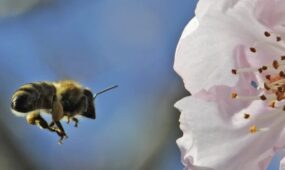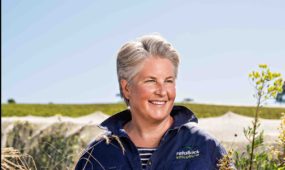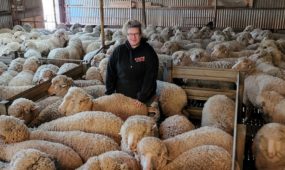Tough lessons in aquaculture pay off
Primary Industries
After years of struggling to make farming tuna and Kingfish pay off, an aquaculture company in South Australia is on track to finally realise the grand plans of its founding director.

Sign up to receive notifications about new stories in this category.
Thank you for subscribing to story notifications.
Hagen Stehr, the director of Clean Seas Tuna, said that he would one day be “richer than Bill Gates” – a claim that rested on his dream of breeding and raising Southern Bluefin Tuna in captivity.
After investing millions in the Bluefin propagation project and then Yellowtail Kingfish farming, Clean Seas had little to show to their investors.
Dr Craig Foster, now CEO of the business, was brought in to the business in 2012 to bring the company round in the right direction – and he's done it. Clean Seas has reported its first profit in seven years, marking a turnaround based on years of tough lessons about aquaculture and the market for fish.
The lessons have resulted in a massive restructuring and a change in focus.
“The tuna propagation has been slowed. We had troubles with availability – we get eggs every year to produce juveniles, but they're only available for about four to six weeks, so it gave us limited time to work through the methods to produce juveniles,” Foster explains.
Our annual results are consistent with what we're telling the market – that we are rebuilding, that we are returning to profitability.
“We've made some progress, we've produced in the hundreds of juveniles, but they've later died because they've been too small for the winter temperature.”
The Kingfish business was at first a promising arm of Clean Seas, but it quickly turned around during a period of oversupply and later poor health in the fish.
“We purchased the Kingfish business in 2007. We produced up to about 4,000 tonnes per year we've sold up to about 2,500 tonnes per year – we did go through a period of overproduction and outstripped our market.
“That pushed our prices down, and we lost a lot of money on Yellowtail Kingfish. There were also health problems in the Kingfish and that took three years to sort out. Between the period of 2009 and 2012, the company struggled.”
Dr Foster began a process of rebuilding the company and regaining their shareholder's confidence.
Having solved the Kingfish's health problems – it was a lack of taurine in their diet, the compound commonly found in Red Bull – their stocks have returned to size, with good growth rates and survival.
This has allowed Clean Seas to refinance the business and focus on the Kingfish market. Two rounds of refinancing started with issuing shares at 3.2 cents in May 2013 for $3 million and November 2013 for a further $9 million.
In their latest full financial year report, Clean Seas have reportedly sold 571 tonnes of fish and retained a biomass of 1,300 tonnes to allow for 2014/15 sales growth.
“Our annual results are consistent with what we're telling the market – that we are rebuilding, that we are returning to profitability, and that our focus is to rebuild the business in two steps.”
The first, Dr Foster explains, is to produce – and sell — 1,500 tonnes of Kingfish a year. The second is to build the figure to 3,000 tonnes.
It's a calculated growth because Clean Seas doesn't want to outstrip their market again.
It's a versatile fish and we need to shift people's thinking. It's equivalent with the top fish species.
“From there it's all market driven. The company as a whole has enough capacity in its infrastructure and water space to produce about 8,000 tonnes of Yellowtail Kingfish. The main impediment to that is stimulating the market.”
Dr Foster says that if asked to name their top ten fish species consumers wouldn’t include Kingfish. Not because they don't like the fish, but because they're not aware of it.
“We've got a lot more work to do in building awareness of Kingfish,” he says.
Up to 95% of the company’s fish is packed in ice and sold whole, which is partly due to Yellowtail Kingfish's heritage as a sashimi fish known as Hiramasa in Japan.
Clean Seas aims to diversify the fish's image beyond just sashimi. The core of their latest marketing push places Kingfish at the centre of the plate, fried or served as a piece of white flesh at high-end restaurants.
This high end is where they need to start to build the market to offset their high production costs. To shape Kingfish as a premium product they need to sell it to boutique restaurants and change the perception consumers have of the fish.
“It's a versatile fish and we need to shift people's thinking. It's equivalent with the top fish species, more expensive than salmon, so we need to focus on those restaurants serving in the $30-40 main price,” he says. “There's plenty of those restaurants and we've only got a fraction of them on our list.”
Currently, 80% of their product is sold domestically. The rest makes its way to Switzerland, Germany, Italy, Norway and England.
In the past, Clean Seas exported half its product to key locations in Asia such as Thailand, Singapore and Hong Kong, as well as the large American market.
They were setback when their Kingfish stocks crashed and they were unable to fully meet demand.
“We've had tremendous support from our wholesaler network. We didn't have very good fish and very limited supplies, but they supported us and we're grateful for that because otherwise we wouldn't have survived.
“Our initial focus is to rebuild in the domestic and European market,” Dr Foster says. “In the coming months we'll start re-entering Asia and around the Pacific.”
America will have to wait because the price-focused market is harder to make margins on for smaller supplies of premium products.
The domestic market, in Dr Foster's eyes, is ripe for Kingfish as there's often a lack of premium fish available in Australia. Around 70% of seafood consumed in Australia is imported.
“A lot of our high-end seafood, abalone, rock lobster, most of that gets exported to Asia. The one product that stands out is the 50,000 tonnes of Salmon produced in Tasmania. 98 per cent of that is sold domestically because people appreciate those fresh fish.”
It's this slice of the market they will likely target with their Kingfish.
In Europe, they're betting their customers are willing to pay a premium for the value of sustainability. Clean Seas is accredited by Friends of the Sea, so they have the credentials to back themselves up.
In Asia their strategy is to target high-end suppliers who have earned the confidence of the continent's top chefs.
“From what we can understand, the trade in Asia is very much in confidence in your supplier. We need to find those suppliers and convince them that our product is worthy of their support,” he says.
For Clean Seas, it seems their first goal of selling 1,500 tonnes per year is achievable at the current price point. The further 1,500 tonnes will depend on their ability to build awareness – and therefore demand – in the market.
“Once we get to 3,000 tonnes, we start to get economies of scale that allow us to sell at a cheaper price but still make our margin, like any manufacturing business.
“The tricky question is how do you get enough volume in the first place, how do you bridge that gap? The only way we see is to concentrate on these niche markets to get started, and then at some point you've got to take a leap of faith.”
Dr Foster thinks that focusing on Kingfish was the right move for the company. Developing only one product leaves them with a clearer goal and more of a chance to return to profitability, but it leaves a prickly question for the original believers in Clean Seas.
“Because our vision that we were set up with was to propagate Southern Bluefin Tuna, we have a moral responsibility to do that. But our shareholders don't invest in us on just a moral basis.
“If the Yellowtail Kingfish is very successful and very profitable, we could say, hey, now we'll start the tuna business – or say what the heck, this is a great business itself, let's forget the tuna.
“There's still a heartfelt attachment to the tuna. There's still an opportunity there. But our focus has to be to get this business on a sound footing.”
For Clean Seas, a sound footing is a positive cash flow and a return for their shareholders. They recently reported a net after tax profit of $11.1 million, and an underlying profit of $1.2 million.
Jump to next article



